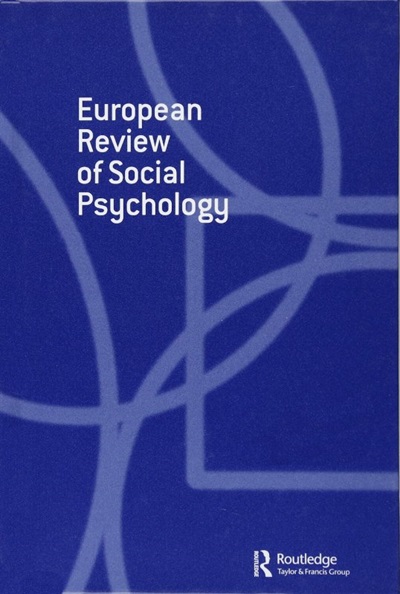可视化心理表征:社会心理学中基于噪声的反向相关初探
IF 7.8
2区 心理学
Q1 PSYCHOLOGY, SOCIAL
引用次数: 64
摘要
随着反向相关的心理物理方法的引入,社会心理学的圣杯——可视化心理表征似乎触手可及。反向相关是一种数据驱动的方法,基于对随机变化的刺激的判断,产生心理表征的视觉代理。这篇综述是一个有影响力的反向相关方法的入门,其中刺激通过对图像像素施加随机噪声而变化。我们的综述表明,该技术是研究社会知觉(例如,种族、性别和人格特征的知觉)的宝贵工具,具有广泛的应用潜力。然而,目前尚不清楚如何最好地解释这些视觉代理。基于认知神经科学的进步,我们认为这些代理是决定社会刺激如何被感知的内部表征的视觉反映。此外,我们还提供了如何使用R进行反向相关实验的教程。本文章由计算机程序翻译,如有差异,请以英文原文为准。
Visualising mental representations: A primer on noise-based reverse correlation in social psychology
ABSTRACT With the introduction of the psychophysical method of reverse correlation, a holy grail of social psychology appears to be within reach – visualising mental representations. Reverse correlation is a data-driven method that yields visual proxies of mental representations, based on judgements of randomly varying stimuli. This review is a primer to an influential reverse correlation approach in which stimuli vary by applying random noise to the pixels of images. Our review suggests that the technique is an invaluable tool in the investigation of social perception (e.g., in the perception of race, gender and personality traits), with ample potential applications. However, it is unclear how these visual proxies are best interpreted. Building on advances in cognitive neuroscience, we suggest that these proxies are visual reflections of the internal representations that determine how social stimuli are perceived. In addition, we provide a tutorial on how to perform reverse correlation experiments using R.
求助全文
通过发布文献求助,成功后即可免费获取论文全文。
去求助
来源期刊

European Review of Social Psychology
PSYCHOLOGY, SOCIAL-
CiteScore
15.30
自引率
2.80%
发文量
6
期刊介绍:
The "European Review of Social Psychology (ERSP)" is a distinguished international journal that operates under the patronage of the European Association of Social Psychology. It serves as a platform for comprehensive, theory-driven reviews that cover the broad spectrum of social psychology. The journal is open to submissions from authors worldwide and is guided by a prestigious international editorial board.
ERSP is particularly interested in publishing reviews that reflect the author's own research program, as demonstrated by their publications in leading peer-reviewed journals. The journal values theoretical contributions that are grounded in a substantial empirical foundation, situating the research within the broader context of existing literature and offering a synthesis that goes beyond the individual articles.
In addition to these in-depth reviews, ERSP also welcomes conventional reviews and meta-analyses, further enriching the journal's offerings. By focusing on high-quality, evidence-based research, ERSP contributes significantly to the advancement of knowledge in social psychology and fosters a deeper understanding of human social behavior across cultures and societies.
 求助内容:
求助内容: 应助结果提醒方式:
应助结果提醒方式:


